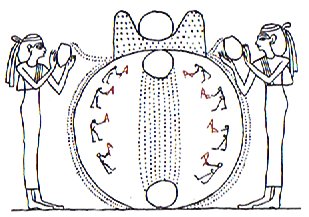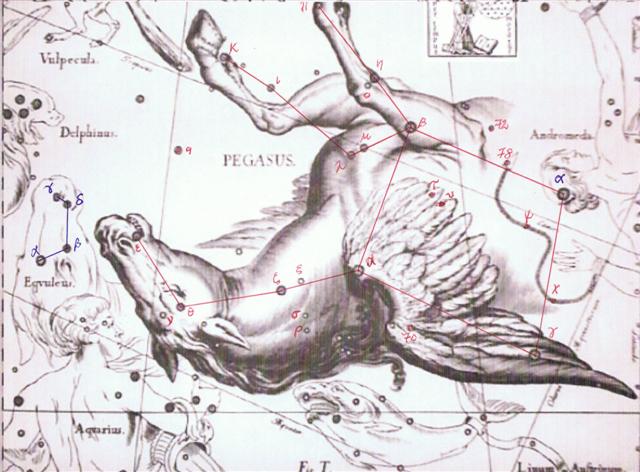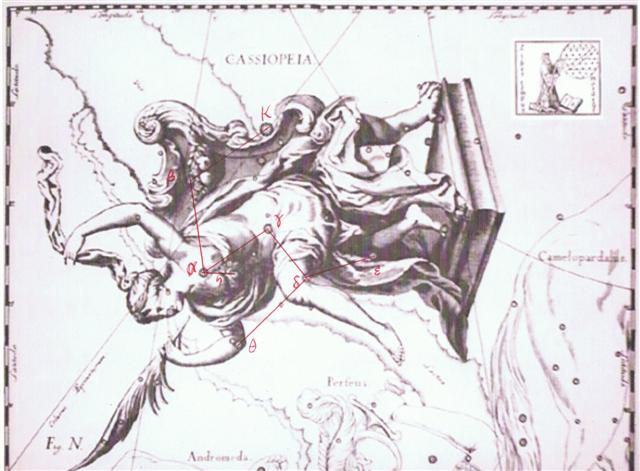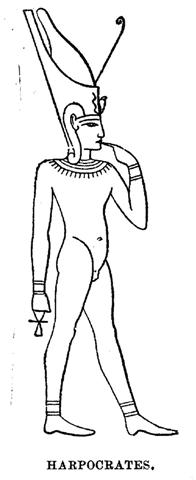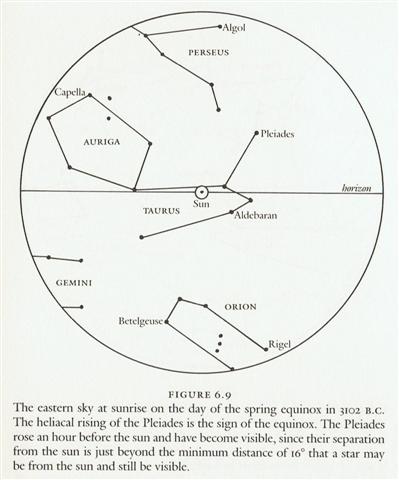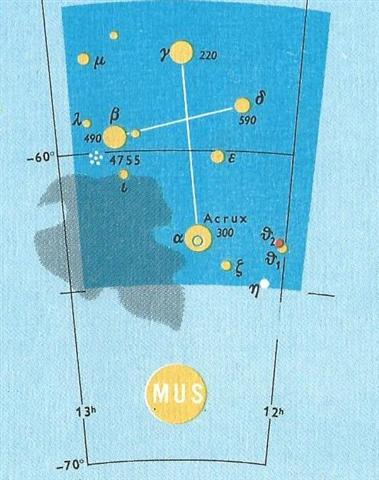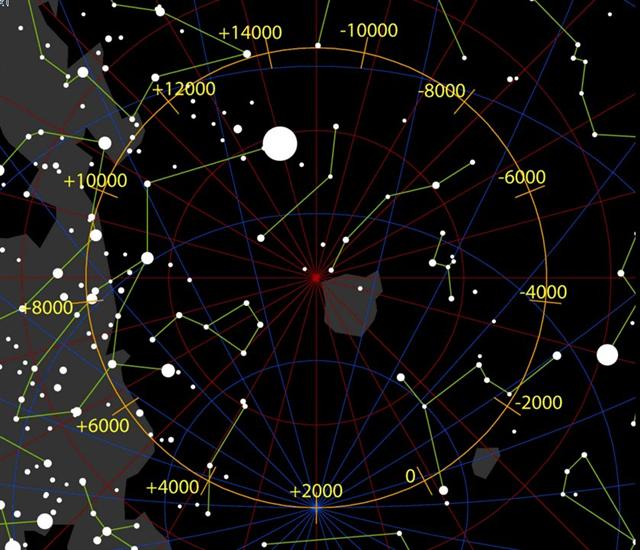In the C text we must notice Omo-tohi (Sucking-Finished) at the end (the important place) of the 4th period in the Moon calendar:
... 280 droplets from the pair of urns are probably representing the number of nights the Moon is illuminated from the light of the Sun during 10 months or 20 fortnights. If we add 80 points (inside the mountain with double peaks) we will reach 360 ... The C text is beginning with the day after the Full Moon at Sirrah, which implies glyph number 192 (Omo-tohi) should be at right ascension day *1 + *183 = *192:
The shape inside Ca7-23 could have been designed with the name of the star α Cassiopeiae (Schedir, the Breast) in mind.
And the person inside the top of the oval in Ca7-24 seems to be sucking his thumb like the Egyptian god at the eastern horizon Horus - in Greek Harpocrates. Omo. To suck; omoaga, bulky cloud; ragi omoaga cumulus; omoomo; to suck repeatedly, to suckle; omotahi, to win everything at a game (lit: to suck whole): omotahi-mai-á e au, he has cleaned me out; omotohi, full (of the moon); ku-omotohiá te mahina, the moon is full. Vanaga. Rima omo, infidelity, faithless, unfaithful. Omoomo, to smack the lips, to suck the breast, to smoke tobacco, to taste of; hakaomoomo, to suckle, to paint. Churchill. Ta.: Omotu, an ember, a coal. Mq.: komotu, omotu, firebrand. Churchill.
This oval was probably representing the face of the Full Moon. The Sun determined the calendar dates and by moving ahead in time with 183 (= 366 / 2) days we will be able to reach the day when the Full Moon should occupy the same place among the stars, this was the foundation of the nakshatra system. ... In each of the Nakshatras there is a 'yoga', a key star that marks a station taken by the moon in its monthly (twenty-seven- or twenty-eight-day course) through the stars. (The sidereal period of the moon, twenty-seven days and a fraction, should be distinguished from the synodic, or phase-shift period of 29.5 days, which is the ultimate antecedent of our month.) In ancient times the priest-astronomers (Brahmans) determined the recurrence of the solstices and equinoxes by the use of the gnomon. Later they developed the Nakshatra system of star reference to determine the recurrence of the seasons, much as the Greeks used the heliacal rising of some star for the same purpose. An example of the operation of the Nakshatra system in antiquity can be seen in figure 6.9:
Here we see that the spring equinox occurred when the sun was at its closest approach to the star Aldebaran (called Rohini by the Hindus) in our constellation Taurus. But, of course, the phenomenon would not have been visible because the star is too close to the sun for observation. The astronomers would have known, however, that the equinoctial point was at Aldebaran by observing the full moon falling near the expected date or near a point in the sky exactly opposite Aldebaran (since the full moon is 180º from the sun), that is, near the star Antares ... Therefore in March 29 (88) - at Schedir, the Breast of Cassiopeia - the Full Moon ought to be observed close to Porrima (88 + 183 = 271 → September 28).
In the following day - at Ca7-24 - the Full Moon should be at Mimosa above the Black Coalsack Bird in the Southern Cross.
In Ca7-25 (3 * 91 - 80 = 193) the Old Bird seems to have realized his position and closed his beak.
The name Mimosa is expressing what is happening here: ... The Sensitive plant (Mimosa pudica L.) is a creeping annual or perennial herb often grown for its curiosity value: the compound leaves fold inward and droop when touched, re-opening within minutes. Mimosa pudica is native to Brazil, but is now a pantropical weed. Other names given to this curious plant are Humble plant, TickleMe plant, Shame plant, Sleeping Grass, Prayer plant, Touch-me-not, Makahiya (Philippines, meaning 'shy'), Mori Vivi (West Indies), mate-loi (false death) (Tonga) ... In the evening the leaflets will fold together and the whole leaf droops downward. It then re-opens at sunrise ...
Once again. The 'breast' glyph in position *191 (→ *150 in the epoch of Bharani) can be compared with a similar glyph a week earlier - at the end of the 3rd Moon period:
Clearly the Moon calendar in the C text is not only a moon calendar but gives information regarding both the positions of the Sun and the Moon against the background of the stars.
In early April was not only η Andromedae at the Full Moon
but also the Sun at 13h. ... In China, every year about the beginning of April, certain officials called Sz'hüen used of old to go about the country armed with wooden clappers. Their business was to summon the people and command them to put out every fire. This was the beginning of the season called Han-shih-tsieh, or 'eating of cold food'. For three days all household fires remained extinct as a preparation for the solemn renewal of the fire, which took place on the fifth or sixth day after the winter solstice [Sic!] ... Day 355 (winter solstice north of the equator) + 6 = 361 = 19 * 19. Or in a leap year: 356 + 5 = 361 = 19 * 19. 355 (356) - 3 = 352 (353) = December 18 (*272). Omo-tohi was in September 29 (272). It would have been in December 18 (352) very far back in time, viz. about 80 / 365.25 * 26000 = 5695 years ago:
|
||||||||||||||||||||||||||||||||||||||||||||||||||||||||||||||||||||||||||||||||||||||||||||||||||||||||||||||||||||||||||||||||||||||||||||||||||||||||||||||||||||||||||||||||||||||||||||||
